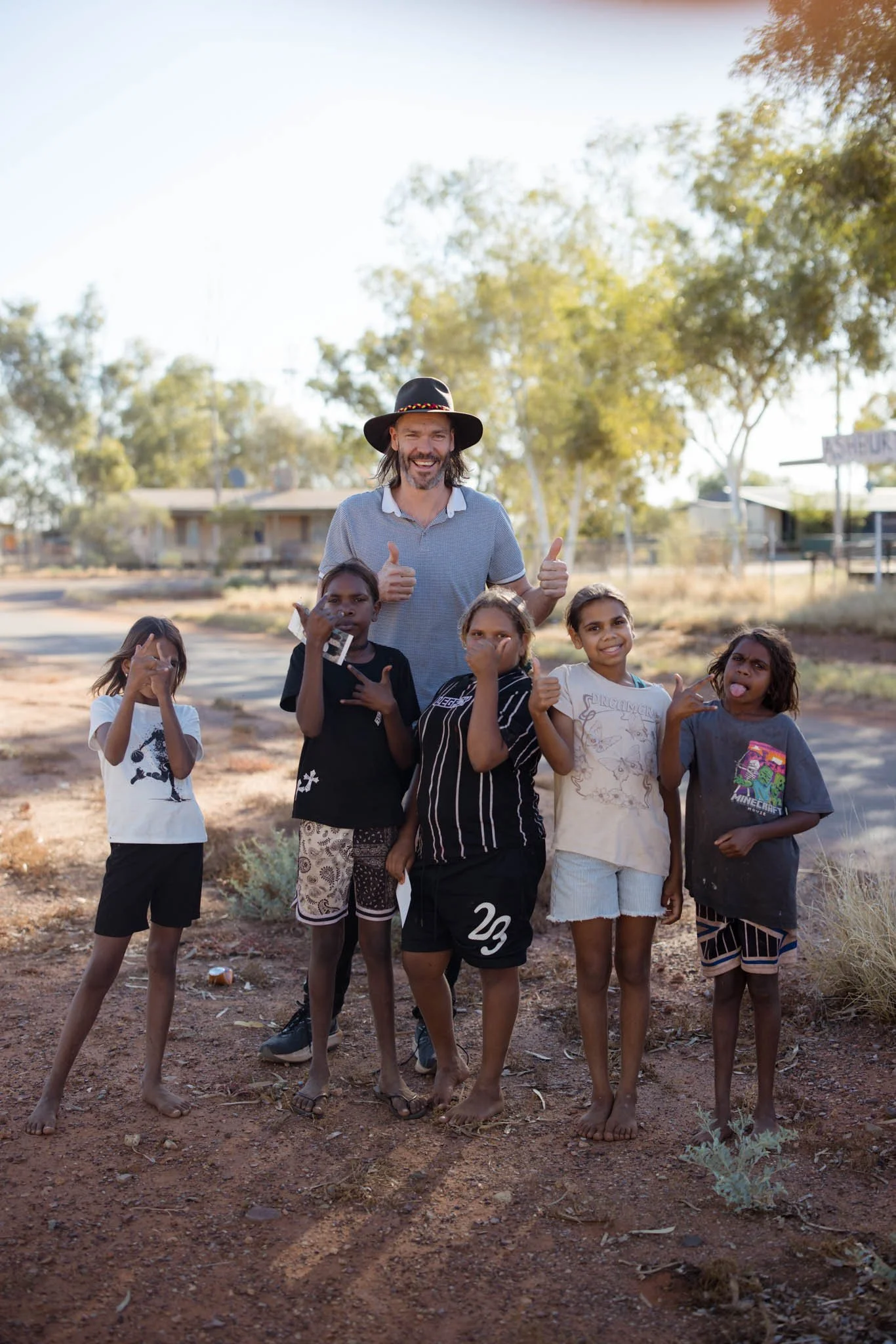Why Cultural Storytelling Must Be Front and Centre in Australia’s Visual Arts Sector
Subject: Dylan “Shaede” Hoskins | Title: Do You See, Me?
Cultural storytelling isn’t just about representation — it’s about truth-telling, connection, and accountability. At Ripple Narratives, we believe it belongs at the heart of how Australia sees itself.
As a majority Aboriginal-owned storytelling agency, our work is grounded in cultural truth and community connection. Through film, photography, and immersive experiences, we create space for voices that are often excluded — not as side notes, but as central narratives.
More Than a Lens
As a father of two, I often reflect on the world my children are growing up in, and the legacy I want to leave behind. I come from a long line of proud Aboriginal activists, and I carry the responsibility to raise strong cultural leaders while contributing to the broader story of who we are as First Nations people.
As a filmmaker and photographer, I’ve come to see storytelling as both resistance and invitation. It’s one thing to teach my children to walk proud in their culture. It’s another to build spaces where others can stand beside us, listen deeply, and understand what it means to carry that culture forward.
A Gap in the Frame
There’s still a profound misunderstanding of Aboriginal identity in this country.
We see it in the backlash against Welcome to Country, the misinformation surrounding the Voice to Parliament, and the silence around health and housing inequality in remote communities.
While documenting stories across the Pilbara for health, housing, and legal services, I’ve witnessed the strength of remote Aboriginal communities, but I’ve also seen the heartbreak. Children growing up with limited opportunity. Families navigating intergenerational trauma. Communities living under the weight of systemic neglect.
Too often, that reality is kept out of view.
What Cultural Storytelling Can Do
Our latest exhibition, The Next Generation: Strength, Vision & Legacy, was created to bring forward what is so often unseen.
It features two portrait series:
The Pilbara Portrait Series – documenting families and children in remote Western Australia
The Shaede Project – a collaborative exploration of gender nonconformity, Blak identity, and sovereignty, co-created with Dylan “Shaede” Hoskins
While Ripple Narratives doesn’t exist specifically to tell Queer stories, we do focus on cultural storytelling that centres Aboriginal and Torres Strait Islander people, places, and perspectives. Blak stories are layered, and The Shaede Project is part of that truth.
What sets this exhibition apart isn’t just the imagery — it’s the space itself. Portraits face each other from opposite walls. The audience stands between them, barefoot in red desert sand. Visitors don’t just observe the story — they stand in the middle of it.
This is storytelling as connection. As resistance. As truth.
The Ethics of Representation
Ethical storytelling in an Aboriginal and intersectional context begins with deep listening.
It means honouring cultural protocols. Accepting that things take time. Knowing that not every story is yours to tell — and just because you can capture something, doesn’t mean you should.
Collaboration is everything. Our work with the communities of the Pilbara and with Shaede isn’t a means to an end — it is the process. Without lived experience, there is no story. And without story, an image is just decoration.
“My softness is power. I can be adorned and still untamed.”
— Dylan “Shaede” Hoskins
What We Hope People Take Away
We don’t want people to simply look — we want them to witness.
We hope that curators, educators, and cultural leaders feel what it means to stand on Country — even symbolically — and to sit with both the discomfort and beauty of these stories. We want them to look into the eyes of these portraits and see people. Children. Families. Ancestors.
If someone leaves the gallery and shares what they saw or felt, then the ripple has already begun.
Looking Forward
If cultural storytelling were truly centred in our galleries, media, and institutions, we would see more truth-telling. More First Nations curators and leaders shaping the narrative. More stories that honour complexity, pain, beauty, and survival — not as side notes or diversity content, but as core to our national identity.
Because these stories are not just art.
They are survival.
They are legacy.
They are power.
Luke Gemmill with children in Jigalong Community


